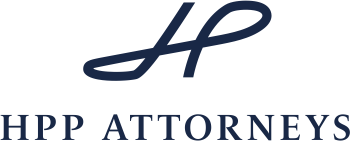Maritime automation and fleet intelligence in maritime cargo logistics face the same digitalisation challenge as in Smart Mobility (MaaS) in passenger transport.
Recent Developments
Finland is investing in maritime automation and fleet intelligence in many ways. The Finnish legislation was recently amended to enable development of autonomous shipping by allowing shipowners to apply exemptions to watchkeeping and minimum vessel manning requirements. Remote pilotage, i.e. pilotage taking place outside a ship, is allowed in Finnish waters as of 1 February 2019. Finland is also actively participating in an assessment process in the IMO to determine how IMO conventions may apply to autonomous ships with different degrees of autonomy.
Major advances were made in autonomous shipping in December 2018: Finferries and Rolls-Royce demonstrated the world’s first fully autonomous ferry, and Helsinki Region Transport (HSL) and ABB successfully tested to remotely operate a ferry. Autonomous shipping is also reflected in the educational field, Novia University of Applied Sciences has launched a master’s degree programme on autonomous maritime operations. The above mentioned are only a few examples of the emerging sector of maritime automation in Finland.
Allocation of Liabilities
Vessel automation raises many kinds of questions in the field of regulation, one of which is the allocation of liabilities. The Finnish Maritime Code (674/1994, as amended), and more precisely part III of it, includes the provisions regarding liability. The general provision on liability can be found in section 1 of chapter 7, under which the shipowner (FI: laivanisäntä, SV: redare) shall be liable to compensate damage caused by the fault or neglect of the master, crew or others performing services for the ship.
In the light of this provision, what would be the liability of a programmer of an autonomous ship control system or other new parties involved? Could product liability, regulated in the Product Liability Act (694/1990, as amended) in Finland, be applied to damages caused by autonomous vessels or vessel equipment, or some components or software thereof? But how would the different types of liability be integrated? Allocation of liabilities between a shipowner, programmer, shipbuilder, subcontractor and marine insurer, and possible other parties involved, requires new approach and thinking.
When reviewing the allocation of liabilities, remotely controlled vessels and autonomous vessels should be distinguished from each other. In practice, the autonomy level may vary which is likely to make a liability framework multiform. The IMO classifies the different degrees of autonomy as follows:
Degree one: Ship with automated processes and decision support: Seafarers are on board to operate and control shipboard systems and functions. Some operations may be automated and at times be unsupervised but with seafarers on board ready to take control.
Degree two: Remotely controlled ship with seafarers on board: The ship is controlled and operated from another location. Seafarers are available on board to take control and to operate the shipboard systems and functions.
Degree three: Remotely controlled ship without seafarers on board: The ship is controlled and operated from another location. There are no seafarers on board.
Degree four: Fully autonomous ship: The operating system of the ship is able to make decisions and determine actions by itself.
Shipowners of conventional vessels should not be forgotten either, as autonomous and remotely controlled ships will sail side by side with conventional ones. Firstly, this begs the practical question of how ship-to-ship communication between ships is going to be arranged. Secondly, when it comes to a possible collision between a conventional and an autonomous ship or a conventional and a remotely controlled ship, the allocation of liability might demand re-evaluating.
Future Insights
Neither international maritime conventions nor Finnish laws have been prepared with a view to autonomous shipping. Consequently, for example the liability provisions will need to be interpreted in a new way or to be amended. Stakeholders in the maritime industry should prepare themselves for new, and perhaps creative, ways of thinking and interpreting liability questions that will arise. And one thing is sure, they will arise.
Because maritime and land transport, as well as cargo and passenger traffic, face similar challenges and are often also closely integrated, it would be recommendable to apply the same best practices to the whole transport chain. This could mean applying similar principles and regulatory approaches in liability issues to all modes of transport.
Nora Gahmberg-Hisinger
Partner
Alexandra Heikkonen
Associate Trainee


